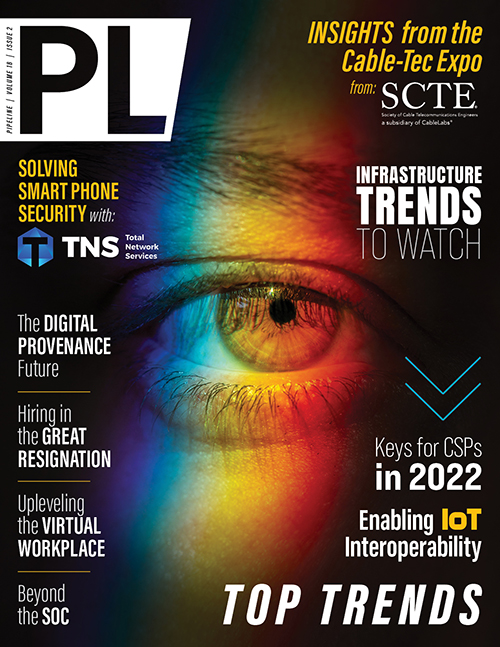E-MEID: The Next Thing in Smartphone Security
An E-MEID is a digital representation of the MEID recorded on a shared digital ledger or blockchain. A blockchain is capable of recording and verifying transactions between two or more parties. This documentation is cryptographically protected and immutable, meaning it cannot be changed without consensus agreement by all participating parties. Blockchain's most famous use case is in the financial industry, which is the foundational technology behind Bitcoin. However, the shared digital ledger concept can apply to any use case where two or more parties maintain verified and auditable transaction records. For smartphone security, the transaction records support the protection and provenance of this personal piece of mobile station equipment.
Enhancing security
By recording the device MEID to a blockchain, a globally unique digital token can represent the associated smartphone or any associated physical or digital asset. This digital token is the E-MEID, and "tokenization" is the name of this process. With the MEID attached to a blockchain, device and network security documentation capabilities expand to include hardware bill-of-material (BOM), software BOM, and software remediation activity. This additional capability can enhance hardware and software supply chain visibility, component provenance, and internal change management processes. The E-MEID can also leverage smartphone geospatial location technology to add time-limited and geofenced functional management capability. These additions can dramatically enhance security and provide near-real-time operational options based on the location of the associated physical or virtual asset. An organization, for example, could disable software running on an E-MEID-provisioned piece of equipment based on its geolocation.
E-MEID can also be used to automate many mobile device management processes. For example, relevant vulnerabilities at a user-specified severity can be automatically detected and recorded using the National Vulnerabilities Database (NVD) maintained by the US National Institute of Standards and Technologies (NIST). This database is the US government's repository of standards-based vulnerability management data. The E-MEID can help automate the recording of relevant vulnerability information on a blockchain and immediately flag it for cybersecurity threat remediation. The distributed ledger can also record digital signatures for validating the initial BOM, any subsequent modifications and automate the collection of equipment supplier performance data. This capability can monitor and evaluate supply chain security maturity and automate input to external provider performance management processes. The information is also available for rapid identification and response to product recall or required design or configuration changes.
2022 smartphone security advancements
Solutions enabled by this exciting security technology include protection against vishing and smishing attacks, smartphone SIM-jacking and unlicensed use of streaming digital media. SIM-jacking essentially takes control of someone's phone number and tricks a carrier into transferring it to a new phone. Vishing is used to describe an attempt to commit fraud using a voice call, while smishing is a fraud attempt using SMS text messaging.
Crypto Gabriel from Forward Edge AI uses the E-MEID to digitally document smartphone device identification, verify personal contact devices, and detect counterfeit smartphones on the wireless network. This advanced smartphone security suite also uses swarm intelligence, AI, machine learning, natural language processing, and the power of 5G networks to stop vishing and smishing on all devices and across all service providers. Another platform function, called $DigitalNames, documents and verifies access to cryptocurrency rewards earned by the user for reporting phone-based scams and robocalls.
COMSovereign, a US-based pure-play communications provider, is pairing its eSIM technology with the E-MEID to deliver next-generation wireless network security. Most smartphones currently use a physical Subscriber Identity Module (SIM) card. An embedded SIM (eSIM) is a programmable SIM embedded directly into a device. They cannot be removed and enable instant network connectivity, customization, remote provisioning, and global roaming between eSIM capable network service providers.



















